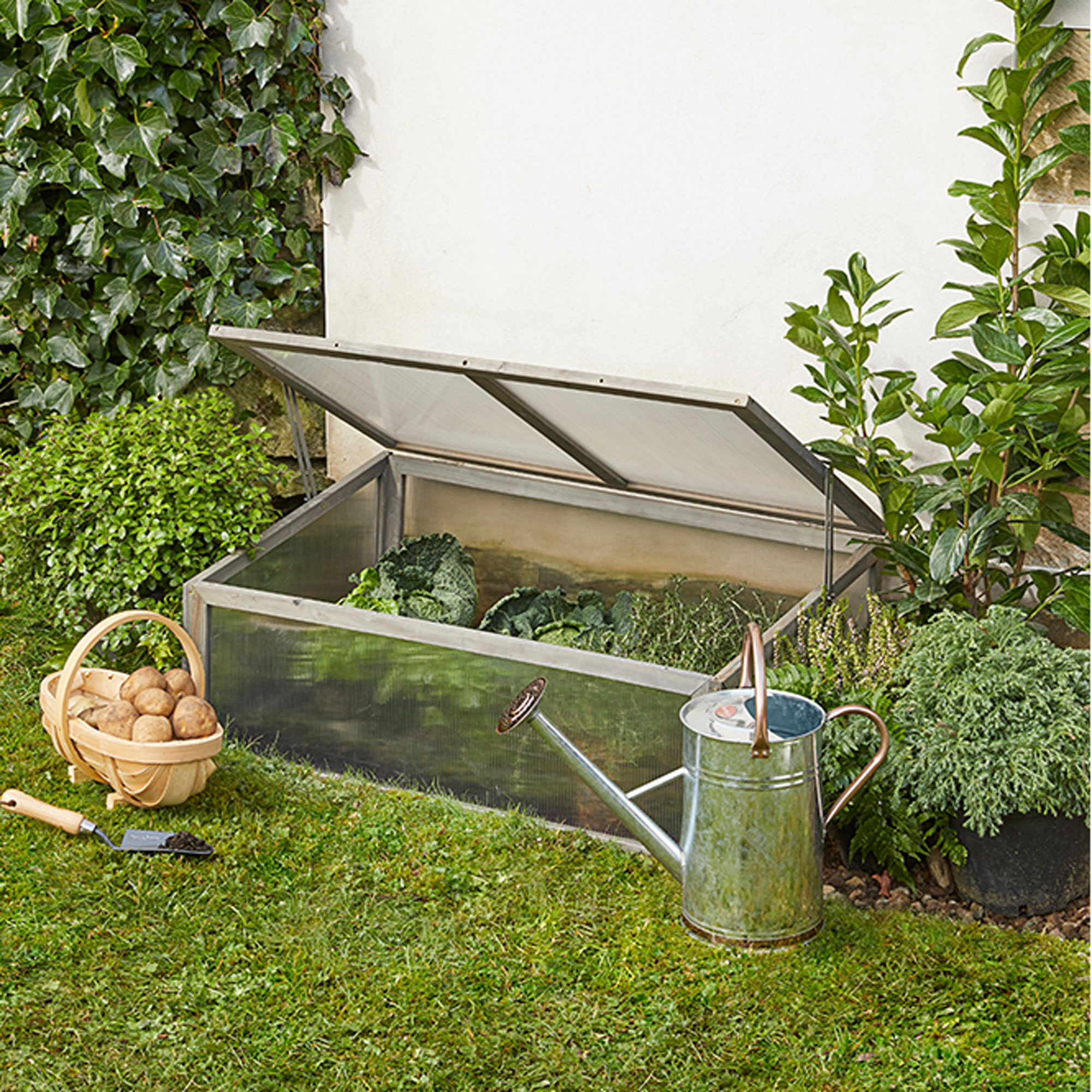
As we’re getting closer to spring, gardening is on our minds more and more. And if you’re looking to start growing crops and plant seedlings soon, then cold frame gardening might be the thing for you. Especially since there are several different ways you can use a cold frame.
Essentially a mini greenhouse in its own right, a cold frame is one of the best plant covers you can invest in and keep in your garden. Mainly because of the many ways it can act as a protection for your plants, while not requiring too much space, making it also one of the best small garden ideas.
We’ve asked our gardening experts to dive deeper into 5 of the best ways to use a cold frame in your garden. And this is what they had to say.

5 ways to use a cold frame in the garden
Firstly, let’s address the elephant in the room – what is cold frame gardening?
‘A cold frame is a low-to-the-ground enclosure with a transparent roof used to grow and protect plants from harsh weather conditions,’ explains Petar Ivanov, Fantastic Gardeners' gardening and plant expert, touching on one of the ways in which you can use the enclosure.
Steve Chilton, garden expert at LeisureBench, continues, ‘The transparent roof allows sunlight to come in and keep the plants warm, like a greenhouse.’
It can also be a great DIY greenhouse idea or alternative, especially if you don’t have the space or resources for a full-sized greenhouse. As well as all these other things.
1. Protecting from harsh weather conditions
The UK is prone to some strong rains and winds which might not be ideal for many plants. So those that could be harmed by these extreme conditions would be the ideal candidates for a cold frame.
‘One way is to use it as protection from particularly strong, cold winds and frosts. It offers a sheltered environment for plants which allows them to survive weather conditions that they wouldn't necessarily be able to if out in the open,’ Steve says.

2. Overwintering dormant plants
Some plants go dormant during the winter season and need a safe spot where they can rest and recharge. A cold frame is the ideal place to do just that.
‘You can use it to overwinter dormant plants. In a hollow, cold frame, the ground is used as insulation, and the sun provides warmth, but pockets of cold air that can harm overwintering plants need to be eliminated,’ Petar says.

3. Starting seeding early
Whether you’re looking into how to prepare raised beds for winter or how to grow sweet peas from seed early, cold frame gardening is perfect as it provides the perfect environment for your seeds to start growing while it’s still too cold out.
‘The main way is using it to act as a mini greenhouse, capturing and retaining heat from the sunlight and creating its own microclimate that's warmer than the outside. This allows you to start seeding earlier on in the spring,’ Steve explains.
4. Extending the growing season past frost
While a cold frame can help start a growing season early, it can also extend it and make it last longer than it usually would.
‘A cold frame allows you to continue growing plants later into autumn and sometimes even winter (if weather permits),’ Steve says.

5. Hardening younger, tender plants
‘You can also use it to harden your young seedlings,’ Petar suggests.
This is usually done during spring or early summer to provide a temporary, safe space when transferring more delicate plants from the greenhouse to the open garden environment.
Currently sold for half of its original price in the B&Q sale, this cold frame is selling like hot cakes on the retailer's site. Fitted with polycarbonate glazing, this wooden frame is equipped with a hinge that allows the roof to stay open when needed.
If you're looking for a cold frame that's on the bigger side, then we recommend this wooden model from Crocus, which is double the size than most standard cold frames. Made from FSC-certified timber, this is also a sustainable option.
If you're looking for the most hardwearing of cold frames that's still made of wood rather than metal or brick, then this Spear & Jackson one is perfect for you. Made with wood treated to a tanalised finish, it provides further weatherproofing to the material. We also love the fluted finish of the transparent acrylic panels.
FAQs
What should I grow in a cold frame?
‘Among the best plants to grow in a cold frame are leaf lettuce, spinach, kale, arugula, beets, carrots, chard, kohlrabi, scallions, parsley, and radishes,’ Petar recommends.
When should I start using a cold frame?
‘You can generally start using a cold frame after the soil is unfrozen, so around the end of winter and beginning of spring, depending on how the season played out,’ Steve says. ‘You can then use the cold frame again in autumn, in order to extend the growing season and protect plants from the first treacherous weather conditions of the colder months.’
So it’s almost time to get your cold frames out now.





!["[T]he First and Fifth Amendments Require ICE to Provide Information About the Whereabouts of a Detained Person"](https://images.inkl.com/s3/publisher/cover/212/reason-cover.png?w=600)

